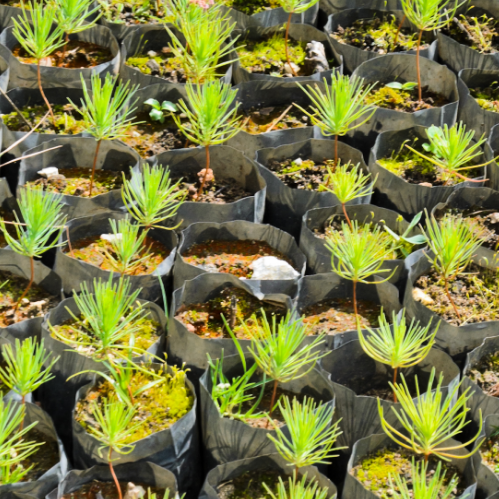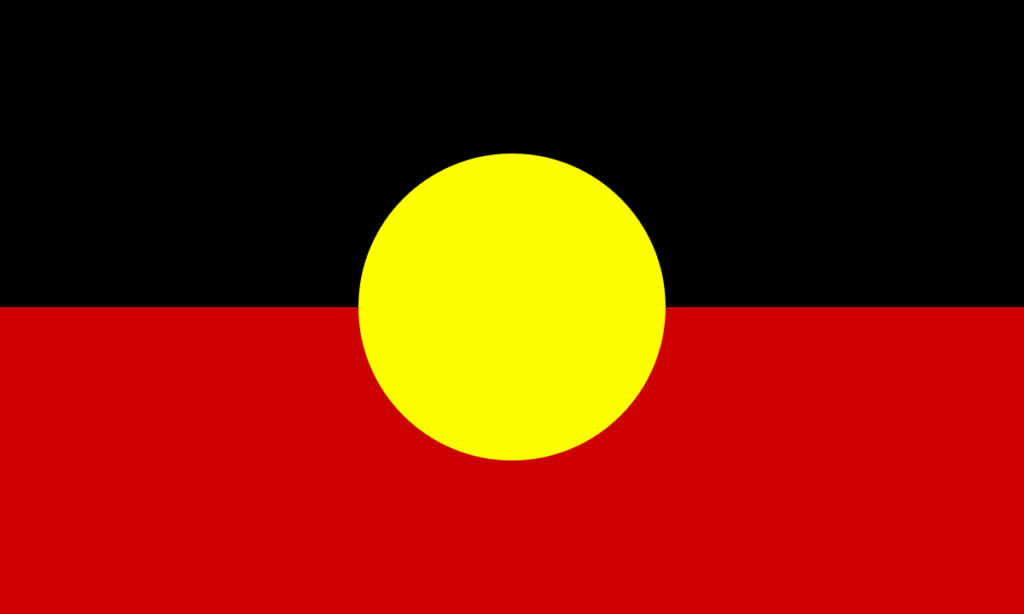FORESTRY
Planting trees is a big deal
Maybe you have heard that famous Chinese quote – “The best time to plant a tree was 20 years ago. The second-best time to plant a tree is today”. It’s not far from the truth, perhaps. Whatever your reason, the message is that we need to keep planting trees, no matter what.
However, planting trees is just one part of the story of tackling environmental impacts and sustainability. We need to consider the reasons for why trees are disappearing in the first place. It could be that there are some easy opportunities for addressing the causes of deforestation first, rather than only the consequences.
Read More
Causes of deforestation
The reasons for deforestation around the world are varied. In some countries, virgin forest land and woodland is being cleared to make way for growing populations and urbanization (housing and development) or for the expansion of farmland. The farmland is used for livestock or fodder crops for livestock, to feed these growing human populations.
What is the difference between afforestation and reforestation?
- Afforestation is planting trees in areas which did not previously have trees on them (e.g. a plantation on a farm in a plot that previously had maize).
- Reforestation is planting trees in an area that used to have trees previously, but which have been removed for one reason or another.
- Perhaps one of the most pertinent aspects of reforestation work is that the new young trees that are planted should ideally be indigenous, i.e. the same species that were naturally there in the area before. These trees should be planted in ways that mimic the natural ecosystem processes (like competition between species, diversity, shading competition). This can be done so that the density and diversity of tree species ends up as being the same as the area’s original condition before it was disturbed. This is easier said than done, but it is worth having as a goal.
How does deforestation release carbon?
There are two ways this happens:
- Burning of vegetation – often the land that is being cleared is burnt (along with any vegetation left on it) to make it easier to plough or dig. The burning produces carbon dioxide in the smoke.
- If a tree is cut down and used for making furniture or in construction, then technically it does not release carbon. However, reducing the number of living trees means that less carbon can be absorbed from the atmosphere because there are less trees to photosynthesise. Additionally, if the tree is left to rot, the carbon captured and stored in the tree’s mass over the years of photosynthesis and growth is released back into the atmosphere as carbon dioxide.
Both processes contribute to the enhanced greenhouse effect and global warming, because carbon dioxide is one of the major greenhouse gases.
What kind of reforestation projects are there?
There is a wide variety of reforestation projects around the world. The types of projects vary because their make-up depends on the creativity of the people and organisations running the projects, and their respective financial models and political environments. Projects can be led by donors, organisations, non-governmental organisations, schools, and community groups or individuals. Depending on the region, reforestation projects will have different objectives, such as:
- restoring biodiversity
- improving soils
- reducing deforestation pressure on specific or other areas
- community livelihood support (eg. providing opportunities for communities to harvest non-timber forest products – harvesting and selling products that trees produce while they are still alive eg. oils for cosmetics)
- spreading awareness of methods of reducing deforestation.
What are the advantages / benefits reforestation?
- Communities can benefit from the trees while they are living, before they are cut down again
- Restoration of biodiversity and ecosystems
- Restoring ecosystems may encourage tourism opportunities
What are the disadvantages or challenges of reforestation projects?
- Young trees are vulnerable and do not always survive – you need to be aware of the seasons and when you plant trees – best to plant in the beginning of the wet season when trees are more likely to survive
- Trees may be destroyed by other community activities e.g. grazing livestock or forest fires.
- It takes time and knowledge (and plenty of patience) to grow saplings to a size where they are strong enough to survive on their own
How does supporting reforestation projects help me to reduce my carbon footprint?
Indirectly, supporting reforestation projects can help to reduce the carbon dioxide emissions from your consumption patterns – because these trees will begin to photosynthesise and absorb the carbon already in the atmosphere.
Important considerations before embarking on a reforestation project
Here are some questions to ask yourself when considering reforestation work:
- What are the goals of the project? Increasing biodiversity, preventing erosion, slowing down deforestation rates, restoring ecosystems etc.?
- Do you want to just plant any kind of trees, or do you want to plant indigenous trees? This will require careful input from a local ecologist.
- Do you have access to specialists and locals with the relevant knowledge of the species and of the area?
- What are the reasons for the deforestation / degradation of the environment? Perhaps it makes sense to work on these drivers first… or get communities to grow woodlots of fast-growing trees, so they can leave the indigenous woodlands intact
- What kind of behaviour do you want to incentivise in areas that are suffering from deforestation? .
Read Less




Forestry




Planting trees is a big deal
Maybe you have heard that famous Chinese quote – “The best time to plant a tree was 20 years ago. The second-best time to plant a tree is today”. It’s not far from the truth, perhaps. Whatever your reason, the message is that we need to keep planting trees, no matter what.
However, planting trees is just one part of the story of tackling environmental impacts and sustainability. We need to consider the reasons for why trees are disappearing in the first place. It could be that there are some easy opportunities for addressing the causes of deforestation first, rather than only the consequences.
Read More
Causes of deforestation
The reasons for deforestation around the world are varied. In some countries, virgin forest land and woodland is being cleared to make way for growing populations and urbanization (housing and development) or for the expansion of farmland. The farmland is used for livestock or fodder crops for livestock, to feed these growing human populations.
What is the difference between afforestation and reforestation?
- Afforestation is planting trees in areas which did not previously have trees on them (e.g. a plantation on a farm in a plot that previously had maize).
- Reforestation is planting trees in an area that used to have trees previously, but which have been removed for one reason or another.
- Perhaps one of the most pertinent aspects of reforestation work is that the new young trees that are planted should ideally be indigenous, i.e. the same species that were naturally there in the area before. These trees should be planted in ways that mimic the natural ecosystem processes (like competition between species, diversity, shading competition). This can be done so that the density and diversity of tree species ends up as being the same as the area’s original condition before it was disturbed. This is easier said than done, but it is worth having as a goal.
How does deforestation release carbon?
There are two ways this happens:
- Burning of vegetation – often the land that is being cleared is burnt (along with any vegetation left on it) to make it easier to plough or dig. The burning produces carbon dioxide in the smoke.
- If a tree is cut down and used for making furniture or in construction, then technically it does not release carbon. However, reducing the number of living trees means that less carbon can be absorbed from the atmosphere because there are less trees to photosynthesise. Additionally, if the tree is left to rot, the carbon captured and stored in the tree’s mass over the years of photosynthesis and growth is released back into the atmosphere as carbon dioxide.
Both processes contribute to the enhanced greenhouse effect and global warming, because carbon dioxide is one of the major greenhouse gases.
What kind of reforestation projects are there?
There is a wide variety of reforestation projects around the world. The types of projects vary because their make-up depends on the creativity of the people and organisations running the projects, and their respective financial models and political environments. Projects can be led by donors, organisations, non-governmental organisations, schools, and community groups or individuals. Depending on the region, reforestation projects will have different objectives, such as:
- restoring biodiversity
- improving soils
- reducing deforestation pressure on specific or other areas
- community livelihood support (eg. providing opportunities for communities to harvest non-timber forest products – harvesting and selling products that trees produce while they are still alive eg. oils for cosmetics)
- spreading awareness of methods of reducing deforestation.
What are the advantages / benefits reforestation?
- Communities can benefit from the trees while they are living, before they are cut down again
- Restoration of biodiversity and ecosystems
- Restoring ecosystems may encourage tourism opportunities
What are the disadvantages or challenges of reforestation projects?
- Young trees are vulnerable and do not always survive – you need to be aware of the seasons and when you plant trees – best to plant in the beginning of the wet season when trees are more likely to survive
- Trees may be destroyed by other community activities e.g. grazing livestock or forest fires.
- It takes time and knowledge (and plenty of patience) to grow saplings to a size where they are strong enough to survive on their own
How does supporting reforestation projects help me to reduce my carbon footprint?
Indirectly, supporting reforestation projects can help to reduce the carbon dioxide emissions from your consumption patterns – because these trees will begin to photosynthesise and absorb the carbon already in the atmosphere.
Important considerations before embarking on a reforestation project
Here are some questions to ask yourself when considering reforestation work:
- What are the goals of the project? Increasing biodiversity, preventing erosion, slowing down deforestation rates, restoring ecosystems etc.?
- Do you want to just plant any kind of trees, or do you want to plant indigenous trees? This will require careful input from a local ecologist.
- Do you have access to specialists and locals with the relevant knowledge of the species and of the area?
- What are the reasons for the deforestation / degradation of the environment? Perhaps it makes sense to work on these drivers first… or get communities to grow woodlots of fast-growing trees, so they can leave the indigenous woodlands intact
- What kind of behaviour do you want to incentivise in areas that are suffering from deforestation? .
Read Less
Forestry
Increasing numbers of corporate and holidaymakers want to travel sustainably, and prefer environmentally aware providers when booking accommodation, events, and venues. The expectations of consumers have changed, and for the hotel industry, adapting to these changes is not only smart business but a strategic imperative.
Tourism is one sector with the biggest potential in the world. In Australia, the hotel and resort sector generates around $8 billion of revenue yearly. With this comes a large carbon emissions footprint, that needs to be acknowledged, measured and a strategy developed to reduce it. It is necessary to provide transparent information and a plan to the consumers who are also on the journey to carbon neutrality.
Read More
Currently, the hotel and resort industry faces the challenge of sustainability. How can we reduce our carbon footprint? Carbon Offset Advisory can help you understand the issues, the process and guide you through a strategic approach to improvement in environmental performance using progressive steps.
You need a plan to reduce resource consumption, improve efficiency, manage waste, control pollutants, use sustainable products, recycle and transition to carbon neutral suppliers.
To achieve this, we focus on several key areas:
- Commit, Measure and Act
- Empowering you with information that facilitates decision making.
- Decarbonise your supply chain.
- Using environmental performance and industry leadership as a positive marketing tool to grow business.
- Strategic implementation to minimise disruption and cost.
Carbon Offset Advisory develops achievable plans and strategies that will lead you to NET ZERO CARBON with minimal cost and disruption.
Read Less







